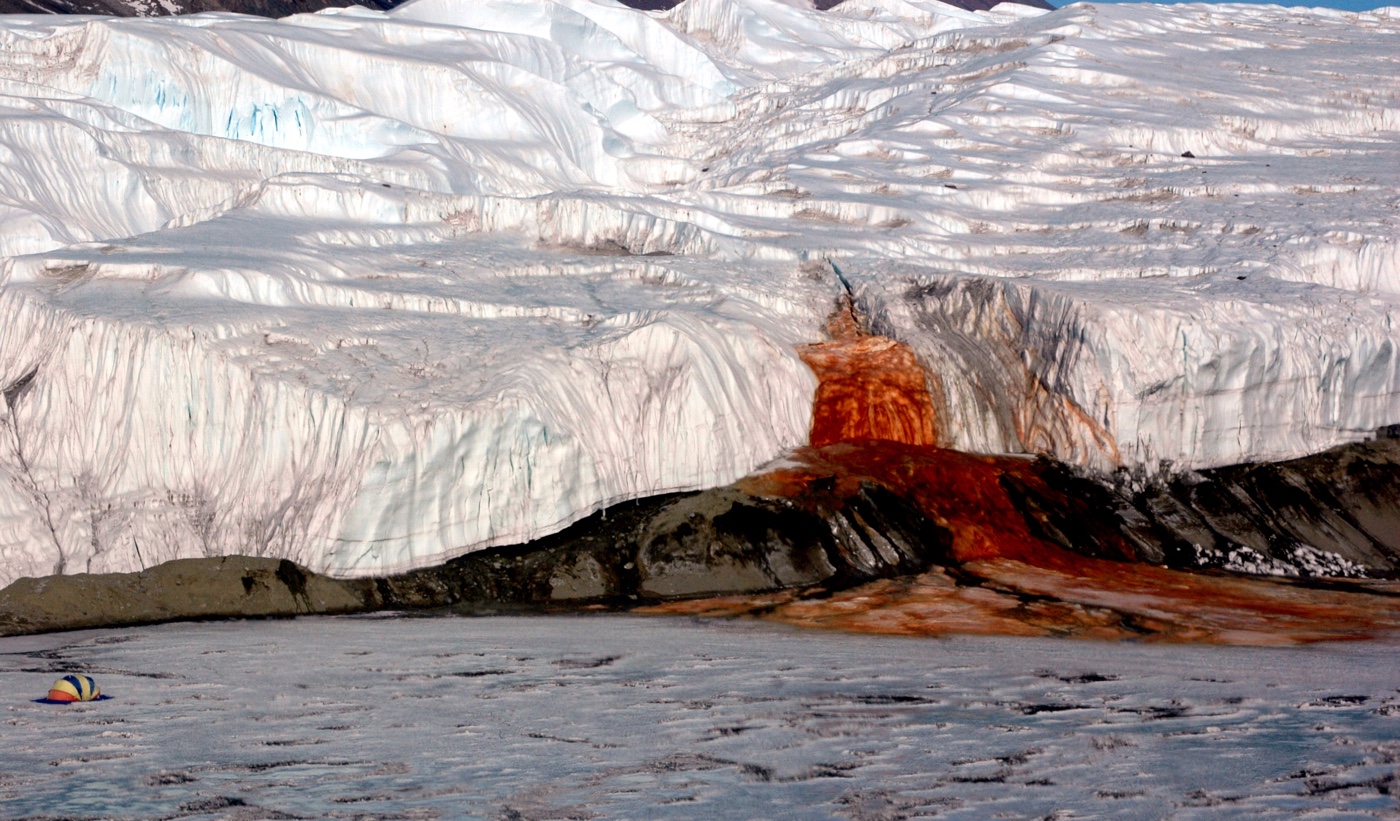Hidden, Briny Heart of Antarctica's 'Blood Falls' Uncovered

A blood-red glacial waterfall in Antarctica finally has a full explanation.
Blood Falls, a bold, sanguinary, waterfall-like stream of meltwater that spills off of Taylor Glacier in the McMurdo Dry Valleys, is fed by an under-ice stream of brine, according to a study published April 24 in the Journal of Glaciology. The briny water is full of iron, which oxidizes and turns red when it hits air, giving the outflow a bloody appearance as it flows into Lake Bonney.
Last year, researchers reported that they had discovered a briny network of groundwater under the Taylor Glacier that they presumed to be the waterfall's source. The new study confirms the connection between this underground network and the waterfall, and traces the path between the two, glaciologist Erin Pettit of the University of Alaska in Fairbanks told Live Science. [In Photos: Antarctica's Stunning Ice]
Strange glacier
As if blood-red meltwater weren't weird enough, the researchers also found that the brines remain liquid even though Taylor Glacier is a cold glacier; it is frozen all the way through to the ground, and its ice is well below the freezing point of water, or 32 degrees Fahrenheit (0 degrees Celsius).
This liquid flow is possible, Pettit said in a statement, because water releases heat as it freezes. That heat penetrates the surrounding, cooler ice and warms it up. Since salty water requires lower temperatures than freshwater does to freeze, the brine is warm enough to move, she said.
"Taylor Glacier is now the coldest-known glacier to have persistently flowing water," Pettit said.
The brines are also home to microbes, which make the sites interesting to astrobiologists who think Mars could have once hosted extra-salty groundwater.
Sign up for the Live Science daily newsletter now
Get the world’s most fascinating discoveries delivered straight to your inbox.
Tracing the flow
Pettit and her colleagues traced the brine using radio-echo sounding, a technique that involves pulsing electrical signals into the glacier using an antenna and then capturing the pulses that bounce back. The researchers found that the brine network penetrated at least 3 miles (5 kilometers) up from the terminus, or end of the glacier. It may go farther, but the ice was too thick for the electromagnetic pulses to penetrate, the researchers said.
Crevasses at the bottom of the glacier probably allow brine to penetrate into the ice, the researchers reported.
The brine does not flow continuously, but instead pulses episodically, Pettit told Live Science. The research team is now finishing up a publication explaining how the movement of the glacier drives these pulses. That paper wrapping up the final mystery of Blood Falls should be published in a few months, Pettit said.
Original article on Live Science.

Stephanie Pappas is a contributing writer for Live Science, covering topics ranging from geoscience to archaeology to the human brain and behavior. She was previously a senior writer for Live Science but is now a freelancer based in Denver, Colorado, and regularly contributes to Scientific American and The Monitor, the monthly magazine of the American Psychological Association. Stephanie received a bachelor's degree in psychology from the University of South Carolina and a graduate certificate in science communication from the University of California, Santa Cruz.









